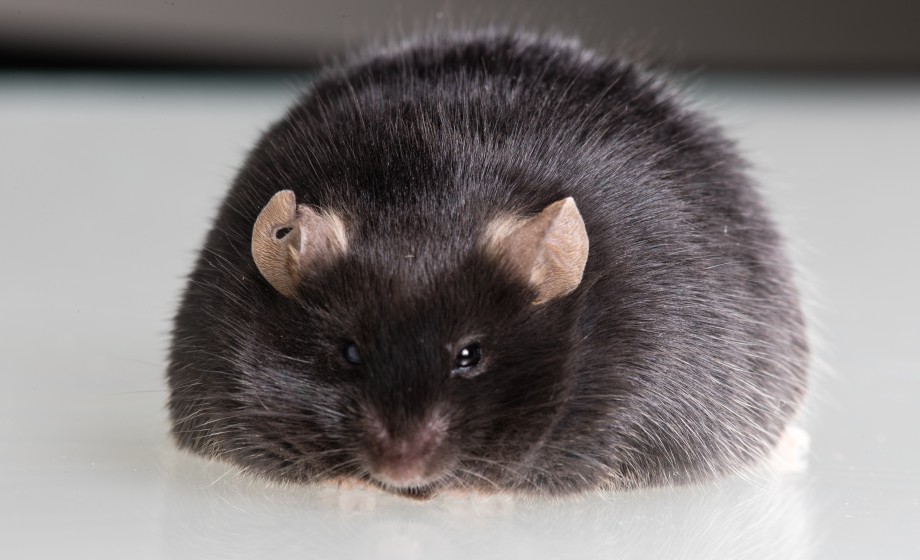Q&A Report: Exploring Estrogen’s Role in Metabolism and the Use of 13C-Labeled Nutrients for Advanced Animal Physiology and Nutrition Research

Answers to these questions have been provided by:
Reilly Enos, PhD
Assistant Professor
Microbiology & Immunology, School of Medicine Columbia
University of South Carolina
Eran Levin, PhD
Head of the Nutritional Ecology Lab
School of Zoology
Tel-Aviv University
Can you expand upon differences between human and mouse estrogen deficiency?
R. Enos: There are a number of differences. Mice do not experience peri-menopause as humans do. Furthermore, peripheral aromatization of androgens (e.g. in adipose tissue) that is typically seen in humans does not significantly occur in female mice.
How complicated is it to operate these analyzers?
E. Levin: Very simple. We train undergrad students in 1-2 hours to work with this analyzer.
What are thoughts/insights can you give regarding hormone replacement therapy?
R. Enos: I am not a medical doctor, but I think hormone replacement therapy provides a number of significant benefits as evidenced in the literature. However, it is clear we need a better understanding of how mode of delivery, dose of delivery, and form of hormone therapy impacts physiological outcomes at a tissue level. This is part of our group’s research agenda.
Can we really learn something about our physiology from studying insect models?
E. Levin: Drosophila melanogaster is one of the most important study organism known for humans. But this is only one species of insect. So you can just imagine how much we can learn from insect models.
Is the aromatase KO brain specific or is it global?
R. Enos: The aromatase KO mouse model we present in the webinar is a full-body deletion.
The extremely high RER of the hawkmoth is impressive. Can you discuss the evidence that this is caused through the PPP? Are there PPP inhibitors that can normalize RER? Are they toxic to these insects?
E. Levin: Please see our paper: Levin, E., Lopez, G., Fane B, Davidowitz G., Hawkmoth use sugar to reduce oxidative damage from flight. Science, 2017 Feb; 355: 733-735. DOI: 10.1126/science.aah4634
Do the animal models have enterohepatic circulation metabolism of steroids?
R. Enos: Earlier work from the 1960’s and 1970’s suggests this does occur in rodents.
Are the insect measurements done with a continuous or stopped flow setup?
E. Levin: We used both. For very small insects, or insects with a very low metabolic rate we use stop flow.
Can changes in E2 levels (tissue or plasma) be corelated by body weight and/or change in body weight? If so, how can that be accounted for to ensure changes in E2 are not due to weight?
R. Enos: This is a tough question to answer because there are an extremely limited number of studies that have examined tissue content of E2. Furthermore, as we have found in mice, the tissue content of E2 is very dynamic. More studies are needed to answer this question.
Since E2 is lower over time, does the expression of the ER alpha and beta receptors follow, if not, why?
R. Enos: Andrea Hevener’s group published a paper in which they show that human visceral adipose tissue accumulation is inversely proportional to subcutaneous ESR1 gene expression, whereas insulin sensitivity is positively correlated with subcutaneous adipose tissue ESR1 gene expression (PMID 32759275). I am not aware of any paper that has examined estrogen receptor expression (protein or mRNA) across the lifespan in a multitude of tissues. This is something that would need to be further explored.
Looking at the variation of RER under E2 treatment, can we conclude that we have a greater metabolic flexibility?
R. Enos: I don’t think we can conclude that at this point in time. The data suggests that estrogen may be impacting fuel utilization favoring lipid oxidation. We have ongoing studies to determine this.
Doxycycline wipes out gut bacteria. Does this affect your doxycycline studies?
R. Enos: We use doxycycline (in the drinking water) to induce aromatase expression in our mouse model. The dose that we use in the water is extremely low (0.1 mg.mL). Because we are aware that this may impact gut bacteria, the wildtype littermate controls also receive doxycycline in their drinking water.
Can we study mice at the age of postmenopause in place of ovariectomy? If it is what age of mice should we aim for?
R. Enos: A limitation of the mouse model is that the majority of mice do not experience natural “menopause”. This is why researchers utilize the OVX model. In an ideal world, the mice would be aged to midlife and an OVX surgery would be performed at that point in time. However, the costs associated with aging the mice limit this.
Have you quantified E2 in the liver? Would could be the effect of high levels of E2 in the liver?
R. Enos: We have quantified E2 in the liver. We find when normalized to tissue weight, E2 content in the liver is quite low compared to other tissues. We are working on a study right now in which we are exploring the impact that E2 has on the liver. We hope to share that information soon.
Is there any evidence showing a connection between microbiota and estrogen fluctuations? As microbiota seems related to food addiction, I wonder if estrogen levels could be somehow influencing this relationship.
R. Enos: This is a very good question. I don’t know of any data showing a connection between microbiota and estrogen fluctuations (where estrogen is directly measured). It would be interesting to compare microbiota changes throughout the estrous cycle of a mouse and see if there is a correlation between estrogen levels. It is possible that there could be an estrogen-microbiota connection that impacts food intake.